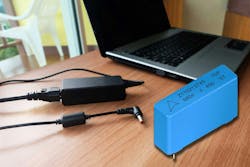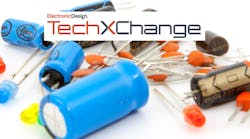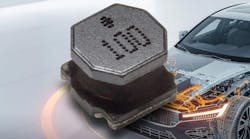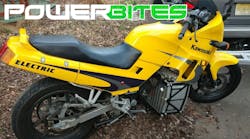Mini PFC Capacitors Target Space-Constrained Consumer Apps
What you'll learn:
- Applications for TDK's new space-constrained capacitors.
- The lead spacing variants in this capacitor series.
TDK Corp.’s B3270xP series of ultra-small, metallized polypropylene (MKP) film capacitors are intended for power-factor-correction (PFC) stages in consumer electronics power supplies. With their compact design and self-healing properties, these components are engineered for use in adapters and power supplies for devices such as laptops and gaming consoles.
The capacitors’ minimized footprint addresses the increasing demand for space-efficient solutions in high-density circuit designs used in power supplies and adapters, switch-mode power supply (SMPS) PFC circuits, and low-power electronic device chargers.
The B3270xP series is available in three lead spacing variants — 10 mm (B32701P), 15 mm (B32702P), and 22.5 mm (B32703P) — with rated DC voltages of 450 V, capacitance values ranging from 0.47 to 2.2 µF, and an equivalent series resistance (ESR) of 10 to 25 mΩ at 100 kHz.
The devices operate up to a +110°C case temperature (with voltage derating above +85°C), delivering consistent performance over a service life of 50,000 hours at rated voltage and +85°C. In addition, they exhibit a dissipation factor tan δ of up to 1.0 × 10⁻³ at 1 kHz.
LTspice models are available for all components. Further information on the products can be found at this link.
>>Check out this TechXchange for similar articles
Next in This Edition of PowerBites
More PowerBites
About the Author
Lee Goldberg
Contributing Editor
Lee Goldberg is a self-identified “Recovering Engineer,” Maker/Hacker, Green-Tech Maven, Aviator, Gadfly, and Geek Dad. He spent the first 18 years of his career helping design microprocessors, embedded systems, renewable energy applications, and the occasional interplanetary spacecraft. After trading his ‘scope and soldering iron for a keyboard and a second career as a tech journalist, he’s spent the next two decades at several print and online engineering publications.
Lee’s current focus is power electronics, especially the technologies involved with energy efficiency, energy management, and renewable energy. This dovetails with his coverage of sustainable technologies and various environmental and social issues within the engineering community that he began in 1996. Lee also covers 3D printers, open-source hardware, and other Maker/Hacker technologies.
Lee holds a BSEE in Electrical Engineering from Thomas Edison College, and participated in a colloquium on technology, society, and the environment at Goddard College’s Institute for Social Ecology. His book, “Green Electronics/Green Bottom Line - A Commonsense Guide To Environmentally Responsible Engineering and Management,” was published by Newnes Press.
Lee, his wife Catherine, and his daughter Anwyn currently reside in the outskirts of Princeton N.J., where they masquerade as a typical suburban family.
Lee also writes the regular PowerBites series.






